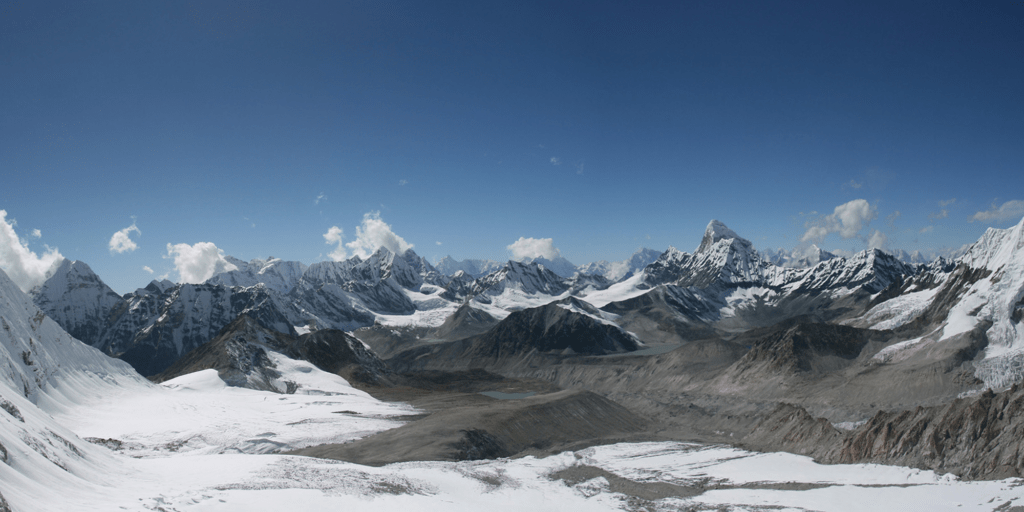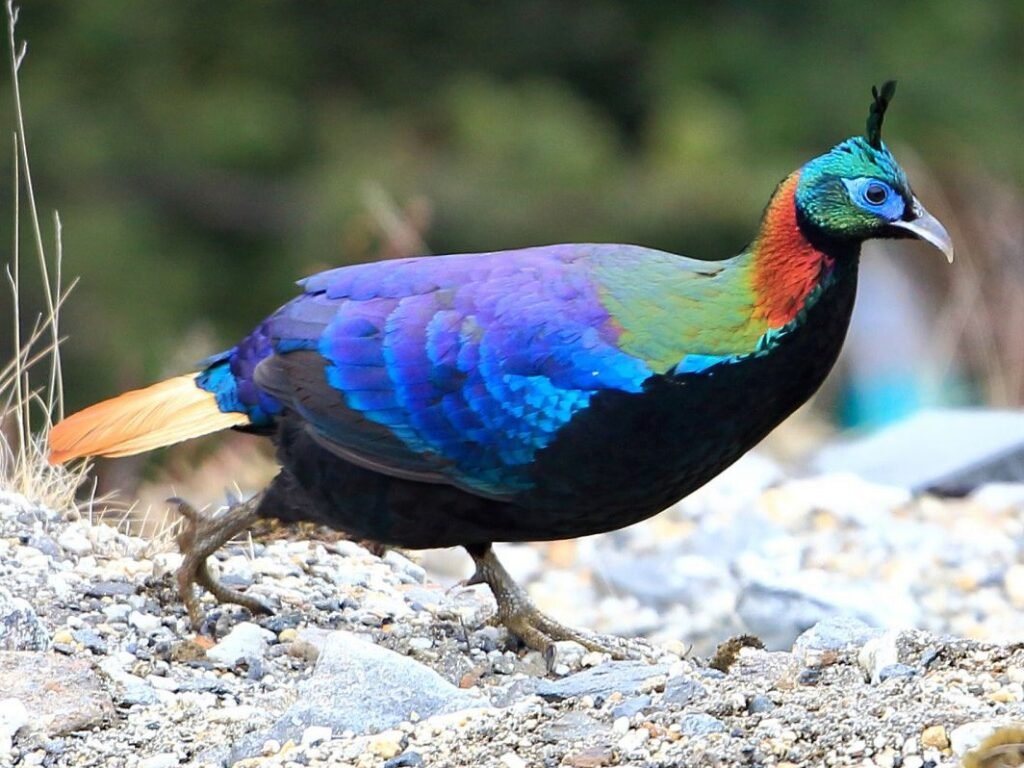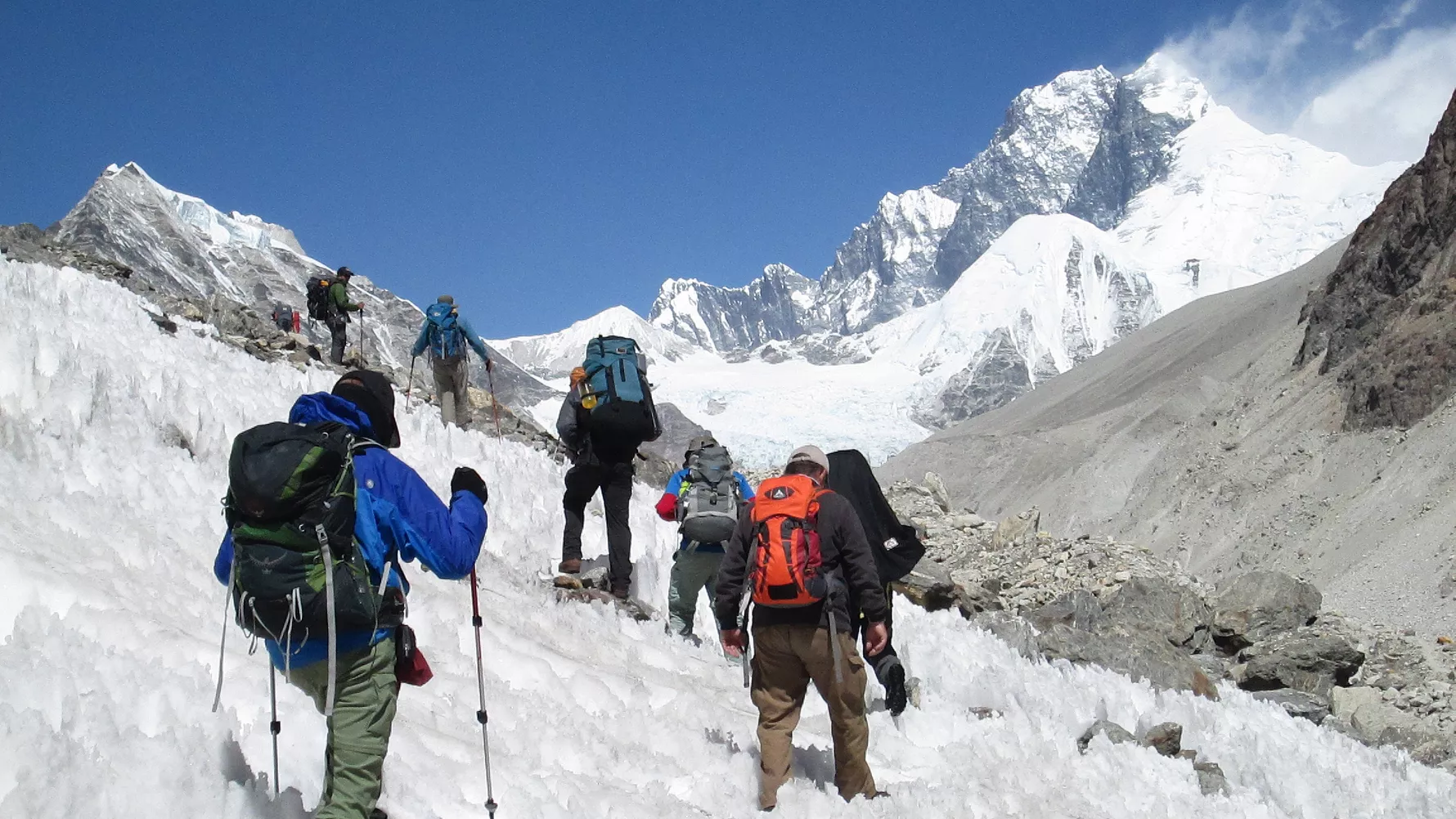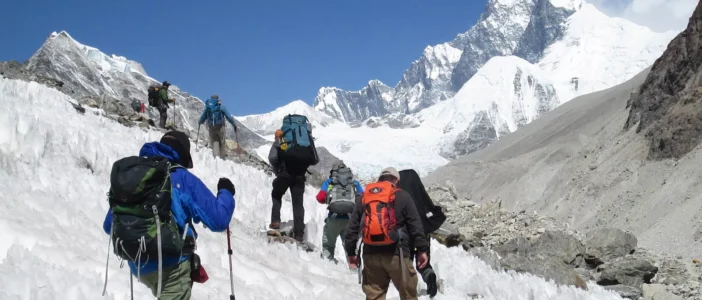Unlock the mysteries of the Great Himalaya Trail with these expert tips and insights.
Introduction: Embracing the Majesty of the Great Himalaya Trail
Welcome to the Great Himalaya Trail, a legendary route that winds through the awe-inspiring landscapes of the Himalayas. Spanning over 4,500 kilometers, this trail offers an unparalleled adventure for hikers seeking to immerse themselves in the natural beauty and cultural richness of the region. In this guide, we’ll delve into the secrets of conquering this epic journey, providing valuable insights into the route, what to expect, and how to prepare fo the adventure of a lifetime.
1. Understanding the Great Himalaya Trail
The Great Himalaya Trail traverses the entire length of the Himalayan range, passing through five countries: India, Nepal, Bhutan, China (Tibet), and Pakistan. However, the most popular section of the trail lies within Nepal, offering diverse landscapes ranging from lush forests to towering peaks. Divided into ten sections, each with its own unique challenges and attractions, the trail provides an opportunity to explore remote villages, encounter diverse wildlife, and witness breathtaking vistas at every turn.

2. Exploring the Route
The Great Himalaya Trail offers a myriad of route options, each presenting its own unique challenges and attractions. Let’s delve deeper into the various sections of the trail to uncover the breathtaking landscapes and cultural wonders that await trekkers.
2.1. Eastern Region: Kanchenjunga Circuit
Starting from the easternmost point of the Great Himalaya Trail, trekkers can embark on the Kanchenjunga Circuit, named after the third highest peak in the world, Kanchenjunga. This remote and rugged trail takes hikers through pristine forests, alpine meadows, and traditional villages inhabited by ethnic communities such as the Limbu and Sherpa. Along the way, trekkers will be rewarded with spectacular views of towering peaks, including Kanchenjunga itself, as well as glimpses of rare wildlife such as the elusive snow leopard.

2.2. Central Region: Annapurna and Manaslu Circuits
Moving westward, the trail passes through the central region of Nepal, home to two of the most iconic trekking destinations in the world: the Annapurna Circuit and the Manaslu Circuit. The Annapurna Circuit offers a diverse range of landscapes, from lush subtropical forests to arid high-altitude deserts, as well as cultural highlights such as the sacred Hindu temple of Muktinath and the picturesque village of Manang. Meanwhile, the Manaslu Circuit provides trekkers with a more off-the-beaten-path experience, as they traverse remote valleys and high mountain passes, encountering Tibetan Buddhist monasteries and traditional Gurung villages along the way.
2.3. Western Region: Langtang and Helambu
Continuing westward, the trail enters the Langtang and Helambu regions, offering trekkers the chance to explore lesser-known but equally stunning landscapes. The Langtang Valley, often referred to as the “Valley of Glaciers,” boasts breathtaking views of snow-capped peaks, serene alpine lakes, and lush rhododendron forests. Trekkers can also immerse themselves in the local Tamang culture, visiting traditional villages and monasteries scattered throughout the valley. Further south, the Helambu region is known for its scenic beauty and rich cultural heritage, with terraced fields, charming villages, and warm hospitality awaiting weary hikers.
2.4. Far Western Region: Dolpo and Humla
For the most adventurous and intrepid trekkers, the far western region of Nepal offers the ultimate wilderness experience. Here, the trail passes through the remote and rugged landscapes of Dolpo and Humla, where traditional Tibetan culture remains largely untouched by modernity. Trekkers can traverse high mountain passes, cross barren desert-like terrain, and visit ancient monasteries nestled in the heart of the Himalayas. The region is also home to Shey Phoksundo National Park, Nepal’s largest national park, where pristine wilderness and rare wildlife abound.

2.5. Beyond Nepal: Bhutan, India, Tibet, and Pakistan
While Nepal is the focal point of the Great Himalaya Trail, the adventure doesn’t end there. The trail extends into neighboring countries such as Bhutan, India, Tibet (China), and Pakistan, offering trekkers the opportunity to explore diverse cultures and landscapes beyond Nepal’s borders. In Bhutan, trekkers can embark on the Snowman Trek, one of the most challenging and remote trekking routes in the world, while in India, the trail passes through the Indian Himalayas, home to iconic peaks such as Nanda Devi and Kangchenjunga. In Tibet, trekkers can experience the ancient Tibetan culture and breathtaking scenery of the Tibetan Plateau, while in Pakistan, the Karakoram Range offers some of the world’s most dramatic and awe-inspiring landscapes, including K2, the second highest peak in the world.
3. Unveiling Spectacular Sights
One of the most captivating aspects of the Great Himalaya Trail is the sheer diversity and splendor of the sights that await trekkers along the way. As adventurers traverse this legendary route, they are treated to a visual feast of breathtaking landscapes, iconic landmarks, and hidden gems waiting to be discovered.
Majestic Peaks
At the heart of the Great Himalaya Trail lies an array of towering peaks that stand as sentinels of the sky, casting their majestic shadows over the landscape. Among these, Mount Everest reigns supreme as the highest mountain on Earth, its snow-capped summit piercing the heavens at an awe-inspiring 8,848 meters above sea level. As trekkers make their way along the trail, they are afforded unparalleled views of this iconic peak, its sheer magnitude serving as a constant reminder of the raw power and beauty of nature.
Iconic Summits
In addition to Mount Everest, the Great Himalaya Trail offers trekkers the opportunity to behold a host of other iconic summits, each with its own unique allure and mystique. From the jagged peaks of Kanchenjunga in the east to the rugged beauty of Annapurna in the west, the trail showcases the full spectrum of Himalayan grandeur. Trekkers can marvel at the sheer cliffs and snow-covered slopes of Makalu, the imposing massif of Dhaulagiri, and the dramatic ridgelines of Manaslu, each summit offering a new perspective on the awe-inspiring landscape that surrounds them.

Pristine Landscapes
Beyond the towering peaks and iconic summits, the Great Himalaya Trail is also home to a diverse range of ecosystems and habitats, each more spectacular than the last. As trekkers journey through the trail, they will encounter lush forests teeming with life, where rhododendrons bloom in a riot of color and rare species of birds flit through the canopy. They will traverse alpine meadows dotted with wildflowers, where yaks graze peacefully against a backdrop of snow-capped peaks. They will cross icy rivers and glacier-fed streams, their crystal-clear waters reflecting the towering mountains that surround them. And they will marvel at the shimmering lakes and pristine valleys that dot the landscape, their serenity offering a welcome respite from the rigors of the trail.
Cultural Heritage
In addition to its natural wonders, the Great Himalaya Trail is also a treasure trove of cultural heritage, where ancient traditions and customs have been preserved for generations. Along the trail, trekkers will encounter remote villages inhabited by indigenous communities, each with its own distinct way of life and unique cultural practices. From the ornate monasteries and prayer flags of Tibetan Buddhism to the colorful festivals and rituals of the Sherpa and Gurung people, the trail provides a glimpse into the rich tapestry of Himalayan culture. Trekkers may have the opportunity to participate in traditional ceremonies, sample local cuisine, and learn about the customs and beliefs that have shaped the lives of the people who call this rugged terrain home.
Wildlife Encounters
As they make their way along the trail, trekkers are also likely to encounter a diverse array of wildlife, from elusive snow leopards and red pandas to majestic Himalayan thars and golden eagles. In the forests and meadows that line the trail, birdwatchers will delight in spotting rare species such as the Himalayan monal and the blood pheasant, their vibrant plumage adding a splash of color to the landscape. And in the higher reaches of the mountains, where few dare to tread, elusive predators such as the snow leopard roam free, their silent presence a testament to the untamed wilderness that lies beyond.

Sunrise and Sunset Views
No journey along the Great Himalaya Trail would be complete without witnessing the awe-inspiring spectacle of sunrise and sunset over the Himalayan peaks. As day breaks, trekkers can watch in wonder as the first rays of sunlight illuminate the snow-capped summits, painting the sky in hues of pink, orange, and gold. And as night falls, they can gaze in awe as the mountains are bathed in the soft glow of the setting sun, casting long shadows across the landscape and heralding the arrival of another night beneath the stars.
Glacial Features
Throughout the Great Himalaya Trail, trekkers will encounter a variety of glacial features that serve as both obstacles and attractions along the way. From towering icefalls and seracs to deep crevasses and glacier-fed lakes, these frozen landscapes provide a stark contrast to the verdant valleys and alpine meadows that surround them. Trekkers may have the opportunity to cross icy rivers and traverse snow-covered slopes, their crampons biting into the frozen terrain as they navigate their way through this frozen wilderness. And as they stand in awe before these towering ice formations, they will gain a newfound appreciation for the raw power and beauty of the Himalayan landscape.
4. Getting There: Logistics and Transportation
Reaching the Great Himalaya Trail typically involves flying into Kathmandu, the capital city of Nepal, which serves as the gateway to the Himalayas. From Kathmandu, trekkers can arrange transportation to the starting point of their chosen section of the trail, whether it be in the eastern or western region of the country. Depending on the location, options for transportation may include domestic flights, buses, or jeeps, with some sections requiring additional trekking to reach the trailhead.
5. Assessing the Difficulty Level
While the Great Himalaya Trail offers unparalleled beauty and adventure, it is not without its challenges. The terrain can be rugged and remote, with steep ascents and descents, high altitudes, and unpredictable weather conditions presenting obstacles along the way. Trekkers should be prepared for long days of hiking, often with limited access to amenities such as food, water, and shelter. Additionally, altitude sickness can pose a risk, particularly when trekking at higher elevations, requiring proper acclimatization and caution.
6. Approximate Length and Duration
The length and duration of the Great Himalaya Trail can vary significantly depending on the chosen route and individual pace. Some sections of the trail can be completed in as little as a few weeks, while others may take several months to traverse in its entirety. On average, trekkers can expect to cover around 20-30 kilometers per day, with rest days interspersed to allow for acclimatization and exploration of the surrounding area.
7. Essential Gear and Equipment
To tackle the Great Himalaya Trail, trekkers must be well-equipped with the necessary gear and equipment to ensure their safety and comfort throughout the journey. This includes sturdy hiking boots, warm and waterproof clothing, a reliable backpack, sleeping bag, and tent, as well as essential items such as a first aid kit, water purification tablets, and high-energy snacks. Additionally, trekking poles can provide stability on uneven terrain, while a GPS device or map and compass are essential for navigation in remote areas.
8. Cultural Encounters Along the Trail
In addition to its natural splendor, the Great Himalaya Trail offers a unique opportunity to immerse oneself in the rich cultural heritage of the Himalayan region. Along the way, trekkers will encounter remote villages inhabited by indigenous communities, each with its own distinct traditions, languages, and customs. From Buddhist monasteries perched high in the mountains to vibrant markets bustling with activity, the trail provides a glimpse into the daily lives of the people who call this rugged terrain home.
9. Environmental Considerations
As stewards of the environment, it is essential for trekkers to minimize their impact on the fragile ecosystems of the Himalayas. This includes practicing Leave No Trace principles, such as packing out all trash, avoiding the use of single-use plastics, and staying on designated trails to prevent erosion and habitat destruction. Additionally, supporting local conservation efforts and responsible tourism initiatives can help preserve the natural beauty and biodiversity of the region for future generations to enjoy.
10. Embracing the Adventure
Embarking on the Great Himalaya Trail is not merely a physical challenge but a journey of self-discovery and personal growth. As trekkers navigate the rugged terrain, overcome obstacles, and connect with the people and landscapes along the way, they will forge memories that will last a lifetime. Whether summiting towering peaks, witnessing breathtaking sunrises, or sharing stories around a campfire under a star-studded sky, the Great Himalaya Trail promises an adventure like no other—one that will leave a lasting impression on the heart and soul.
Conclusion: A Call to Adventure
In conclusion, the Great Himalaya Trail beckons adventurers from around the world to embark on a journey of epic proportions. With its stunning landscapes, rich cultural heritage, and unparalleled sense of adventure, this iconic trekking route offers an experience that is both challenging and rewarding in equal measure. By following these secrets to conquering the trail, trekkers can unlock the mysteries of the Himalayas and create memories that will last a lifetime. So pack your bags, lace up your boots, and prepare for the adventure of a lifetime on the Great Himalaya Trail.

